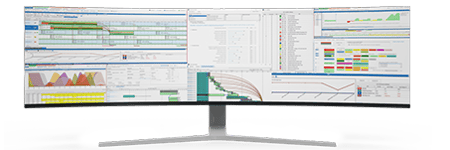The Shift Toward Local Production: Strategies for Operations Directors
Global manufacturing networks are experiencing a seismic shift as the focus transitions from globalization to localization. This trend, driven by supply chain vulnerabilities, geopolitical uncertainties, and sustainability goals, has prompted industrial manufacturing leaders to rethink their strategies.
For Operations Directors in industrial manufacturing, this shift toward local production is both a challenge and an opportunity—a call to redefine operational models, optimize resource allocation, and leverage technology to stay competitive.

The Case for Local Production
1. Supply Chain Resilience
The pandemic highlighted vulnerabilities in global supply chains, such as dependency on overseas suppliers and delayed shipments. Local production reduces reliance on lengthy supply chains, providing better control over materials and timelines.
2. Regulatory Compliance
Many governments are incentivizing local production through tax benefits, subsidies, and trade tariffs to boost domestic manufacturing. Staying local may help manufacturers comply with evolving regulatory landscapes.
3. Sustainability Goals
Localized production supports sustainability by minimizing transportation emissions and reducing the carbon footprint. Industrial manufacturers can also better manage waste and adopt circular manufacturing practices.
4. Consumer Preferences
Consumers are increasingly favoring locally made products, not only for their perceived quality but also for ethical and environmental considerations. For industrial manufacturers, this means catering to a growing demand for "made local" credentials.

Challenges in Transitioning to Local Production
While the advantages of local production are clear, the journey is fraught with operational and strategic challenges:
Infrastructure Development: Establishing new facilities or repurposing existing ones to accommodate local production can require significant investment.
Resource Management: Ensuring the availability of raw materials and skilled labor within a localized context requires strategic planning.
Technology Integration: To achieve efficiency and scalability, localized facilities must integrate advanced planning and scheduling systems.
Cost Management: Transitioning to local production can initially increase operational costs, necessitating innovative cost-containment strategies.
![]()

Role of Technology in the Localization Strategy
For Operations Directors, technology becomes the linchpin in navigating this shift. Integrating advanced planning solutions such as PlanetTogether with ERP systems like SAP, Oracle, Microsoft Dynamics, Kinaxis, or Aveva can transform challenges into opportunities. Here's how:
Optimized Production Scheduling
PlanetTogether Advanced Planning and Scheduling (APS) software empowers manufacturers to create precise production schedules that balance labor, materials, and machine availability. When integrated with ERP systems like SAP or Oracle, these schedules ensure that localized operations remain efficient and cost-effective.
For example:
SAP integration provides real-time data on inventory levels and demand forecasts, enabling better decision-making.
Oracle integration ensures that production aligns with financial constraints and compliance requirements.
Enhanced Resource Allocation
Localized production requires efficient resource allocation to prevent bottlenecks. PlanetTogether, integrated with Aveva’s industrial software, can offer digital twin capabilities that simulate production scenarios, helping Operations Directors optimize resources and predict potential disruptions.
Demand-Driven Planning
Industrial manufacturers must be responsive to local market demands. Integrating PlanetTogether with Kinaxis enables end-to-end visibility across the supply chain, allowing Operations Directors to align production with localized demand, reduce lead times, and minimize waste.
Sustainability Tracking
PlanetTogether’s integration with Microsoft Dynamics can help track sustainability metrics at local production sites. This includes monitoring energy usage, waste generation, and carbon emissions, enabling manufacturers to meet sustainability goals while optimizing costs.

Strategies for a Successful Transition to Local Production
1. Start Small, Scale Strategically
Begin by localizing a single production line or facility. Use this as a pilot project to identify challenges, fine-tune operations, and gather insights before scaling the strategy across multiple facilities.
2. Leverage Data Analytics
Data-driven decision-making is critical for local production. Advanced planning tools like PlanetTogether, when integrated with ERP systems, provide actionable insights into production efficiency, cost management, and customer preferences.
3. Focus on Workforce Development
Localized production requires a skilled workforce. Invest in training programs to upskill employees, focusing on the specific needs of localized operations and the technologies in use.
4. Adopt Agile Supply Chain Models
An agile supply chain is essential for local production to succeed. Collaborate with regional suppliers, create flexible inventory systems, and leverage technologies like Kinaxis to maintain supply chain agility.
5. Invest in Automation and Smart Manufacturing
Automation and Industry 4.0 technologies are crucial to offset the higher labor costs often associated with local production. Integration between PlanetTogether and Aveva, for instance, can enable smart manufacturing capabilities such as predictive maintenance and real-time process monitoring.
As industrial manufacturing embraces the shift toward local production, the role of an Operations Director is pivotal. Success lies in adopting a balanced approach that leverages technology, optimizes resources, and aligns with market demands. Integration of PlanetTogether with ERP systems like SAP, Oracle, Microsoft Dynamics, Kinaxis, or Aveva offers a robust framework for navigating the complexities of localized production.
By focusing on resilience, sustainability, and innovation, industrial manufacturers can not only adapt to this paradigm shift but thrive in it. The move to local production isn’t just a response to current challenges—it’s a forward-thinking strategy that positions manufacturers for long-term success in an increasingly dynamic global landscape.
For Operations Directors, the time to act is now. Embrace the shift, harness technology, and lead the charge toward a more sustainable, efficient, and localized future. Are you ready to take your manufacturing operations to the next level? Contact us today to learn more about how PlanetTogether can help you achieve your goals and drive success in your industry.
Topics: Industrial Manufacturing, PlanetTogether Software, Demand-Driven Planning, Integrating PlanetTogether, Optimized Production Scheduling, Enhanced Resource Allocation, Sustainability Tracking, Consumer Preferences





















LEAVE A COMMENT